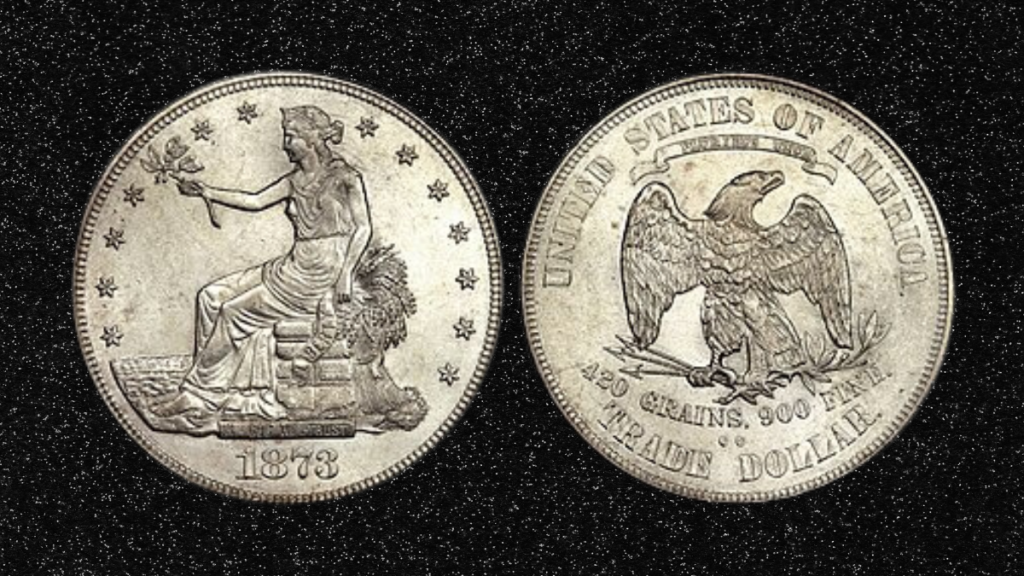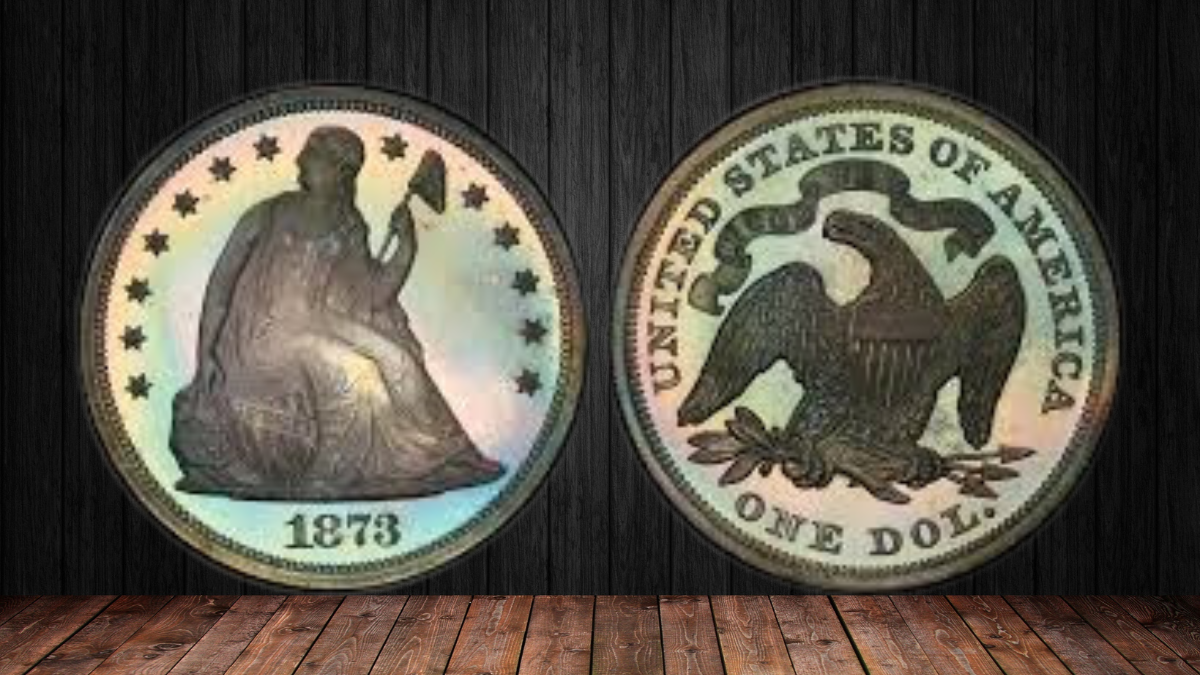The 1873 Liberty Seated Dollar is one of the most sought-after coins among collectors, especially given its historical context.
The Philadelphia Mint played a key role in producing these coins in the early 1870s, but by 1873, the United States was moving towards changes in its monetary system, greatly affecting the future of silver dollars.
The Mint Act of 1873, also known as “The Crime of 1873,” eliminated the production of silver dollars, which led to the Liberty Seated Dollar being discontinued.
This was part of a broader global shift towards the gold standard, influenced by Europe’s monetary reforms. As a result, this coin became highly valuable due to its limited production and historical significance.
Production and Impact of the Mint Act of 1873

In early 1873, the Philadelphia Mint struck nearly 300,000 Liberty Seated Dollars before the Coinage Act came into effect. From January to March, the mint worked tirelessly to produce the coin in several batches.
The Mint Act that followed not only changed the weight of some smaller denominations but also replaced the silver dollar with the Trade Dollar, intended for international trade.
The decision to stop producing silver dollars had immediate repercussions. The demonetization of silver led to a financial panic later that year, which affected industries and people alike.
Many saw this as an unjust act that favored gold, and the Liberty Seated Dollar became a symbol of the lost value of silver.
The Most Valuable U.S. Copper Coins You Might Have in Your Pocket
Key Design Features of the 1873 Liberty Seated Dollar
The design of the Liberty Seated Dollar is both beautiful and symbolic. The obverse (front) of the coin features a seated figure of Liberty, with a shield at her side and a staff with a Liberty cap in her hand.
Thirteen stars surround her, representing the original colonies of the United States. The reverse (back) displays a majestic eagle with spread wings, clutching an olive branch and arrows in its talons, symbolizing peace and strength.
How a 1-Dollar Coin Could Be Worth Millions
Rarity and Collectibility

For collectors, the 1873 Liberty Seated Dollar holds significant value. While Philadelphia produced the largest quantity of these coins, the Carson City and San Francisco Mints also contributed smaller numbers, making coins from those locations exceedingly rare.
In fact, the entire mintage from San Francisco was believed to be destroyed, adding to the mystique surrounding this coin.
Surviving examples of the 1873 Liberty Seated Dollar in good condition are rare, with only a small number of high-grade specimens known today.
The market value of these coins depends on their condition, with prices ranging from $1,000 for About Uncirculated coins to over $60,000 for pristine, uncirculated examples.
12 Chinese Coins Worth Up to $2 Million – Are You Holding One?
Market Insights
Notable examples of the 1873 Liberty Seated Dollar have fetched impressive prices at auctions. For instance, a PCGS MS66+ (the highest known grade for this coin) sold for over $51,000 in 2006.
Collectors covet these coins, not only for their rarity but for the rich history and craftsmanship they represent.
Coins with special toning, such as rose, gold, or sea-green patina, can fetch even higher prices. The intricate coloring adds an extra layer of appeal for those looking to add a unique piece to their collection.
Conclusion
The 1873 Liberty Seated Dollar is more than just a coin; it’s a piece of American history. Its discontinuation due to the Mint Act of 1873 and the resulting rarity make it a coveted item for collectors.
With its beautiful design and limited production, it represents a fascinating period of change in the United States’ monetary system.
For both seasoned and new collectors, owning a Liberty Seated Dollar from 1873 is a chance to hold a tangible piece of history and a symbol of a bygone era.

